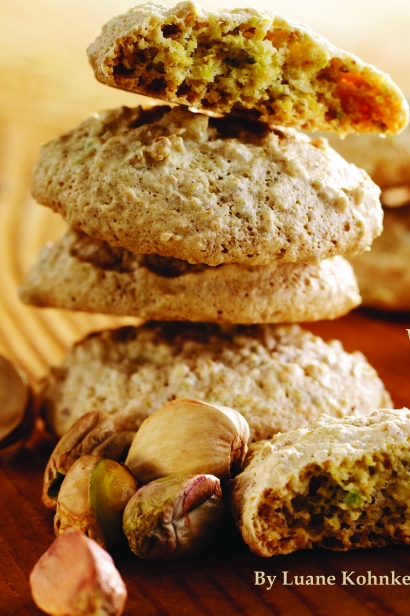Edible Reads: Ancient Heritage Cookies
Ancient and whole-grain flours, deeply rooted in mankind’s history for thousands of years, recently have been gaining popularity as healthier alternatives to all-purpose flour.
Unlike refined flour, whole-grain flour contains the germ, endosperm and bran of the grain, parts that are removed in the refining process (along with much of the flavor and nutritional value) for the purpose of extending the product’s shelf life. Whole grains tend to have more fiber and more nutrients than refined flours, and their consumption has been linked to a decrease in risk factors for various diseases. Although ancient grains have no official definition, they are generally considered to be grains or pseudo-grains that have been largely unchanged over the last several hundred years. They include:
- The Fertile Crescent: whole wheat, barley, spelt, rye, kamut, hazelnut
- Asia and the Pacific Basin: oats, brown rice, coconut, almond, pistachio
- Mesoamerica: corn, amaranth
Baking with whole-grain, ancient grain and nut flours is somewhat more nuanced than baking with all-purpose flour. Flours are less shelf-stable and should be stored in a refrigerator or freezer to maintain freshness. The doughs should be hydrated for a few hours or overnight to soften the bran and improve the texture of the final product.
The Fertile Crescent—which stretches from the Nile River in Egypt to the Tigris and Euphrates rivers in modern Iraq, encompassing Israel, Lebanon, Jordan and Syria—is often called the cradle of civilization because of its importance to the origins of agriculture and the spread of humanity. It is bordered by mountain ranges to the north and deserts to the south, with the Caspian and Black seas on the north, the Mediterranean and Red seas on the west, and the Indian Ocean and Persian Gulf on the south and east.
This region’s diverse climates and dramatic range of elevation gave rise to many species of edible plants. In ancient times, it had greater biodiversity than either Europe or northern Africa. It was home to several Neolithic-era crops dating back to about 10,000 BC, including einkorn—the progenitor of every variety of wheat grown today. It was also home to emmer, spelt, barley, rye and kamut.
Ancient Heritage Cookies contains recipes that focus exclusively on whole-grain, ancient-grain and nut flours. Thirteen of the 50 recipes are gluten-free, made with gluten-free grain and nut flours, and two of the recipes are vegan. The recipes are organized by the region of the world where the flour originated. For more information and recipes, visit LuaneKohnke.com or Facebook.com/luanekohnke/.








